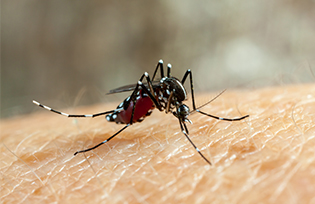All Treatments
- All Type of Cancers
- Arthritis
- Catarrh
- Dengue
- Diabetic
- Hemorrhoids
- I.T.P
- Infertility
- Kidney disease (C.K.D)
- Leptospirosis
- Liver Diseases
- Lung diseases
- Lung Insfection
- Migraine
- Nervous System Diseases
- Sciatica

Emergency Cases
+94 917 914 202Opening Hours
- Saturday: 08:00 am - 5:00 pm
- Sunday: 08:00 am - 5:00 pm
- Monday 08:00 am - 5:00 pm

Dengue
Dengue is the most common and high risky mosquito-borne viral infection. The virus which causes dengue is dengue virus (DENV). DENV has 4 serotypes, which means a person has the possibility to infect dengue 4 times. Dengue virus is transmitted by female mosquitoes that feed both indoors and outdoors during the daytime (Mainly of the species Aedes aegypti and Ae. albopictus to a lesser extent) These mosquitoes’ breed in areas with standing water, which might be a puddle, water tank, container, old tires or even a coconut shell. Regular garbage collections, some fish tanks (depend on the type of fish) also contribute to the spread of mosquitoes. Risk Risk of Dengue exists in tropical and subtropical areas of Central America, South America, Africa, Asia, and Oceania. If you are a traveler, you are at risk during outbreaks. Long-term travelers and workers going to areas where Dengue is endemic are at higher risk. Dengue occurs in urban and suburban areas with higher transmission rates happening during the rainy season. Dengue incidents have grown dramatically all around the world during recent decades. Transmission
Dengue can be transmitted mainly in 2 ways.
- Mosquito-to-human transmission – Virus transmitted to humans through a bite of an infected female mosquito.
- Human-to-mosquito transmission – Mosquitos can also become infected by biting a person who is infected with DENV.
- It has also found with evidence that there’s a possibility of maternal transmission of dengue (from a pregnant mother to a baby)
Symptoms
Dengue symptoms usually last for 2-7 days, after an incubation period of 4-10 days after an infected mosquito bite. Dengue symptoms are as follows.
- Severe headache
- Pain behind the eyes
- Muscle and joint pains
- Nausea
- Vomiting
- Swollen glands
- Rash